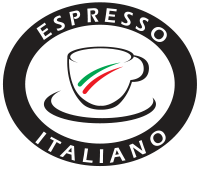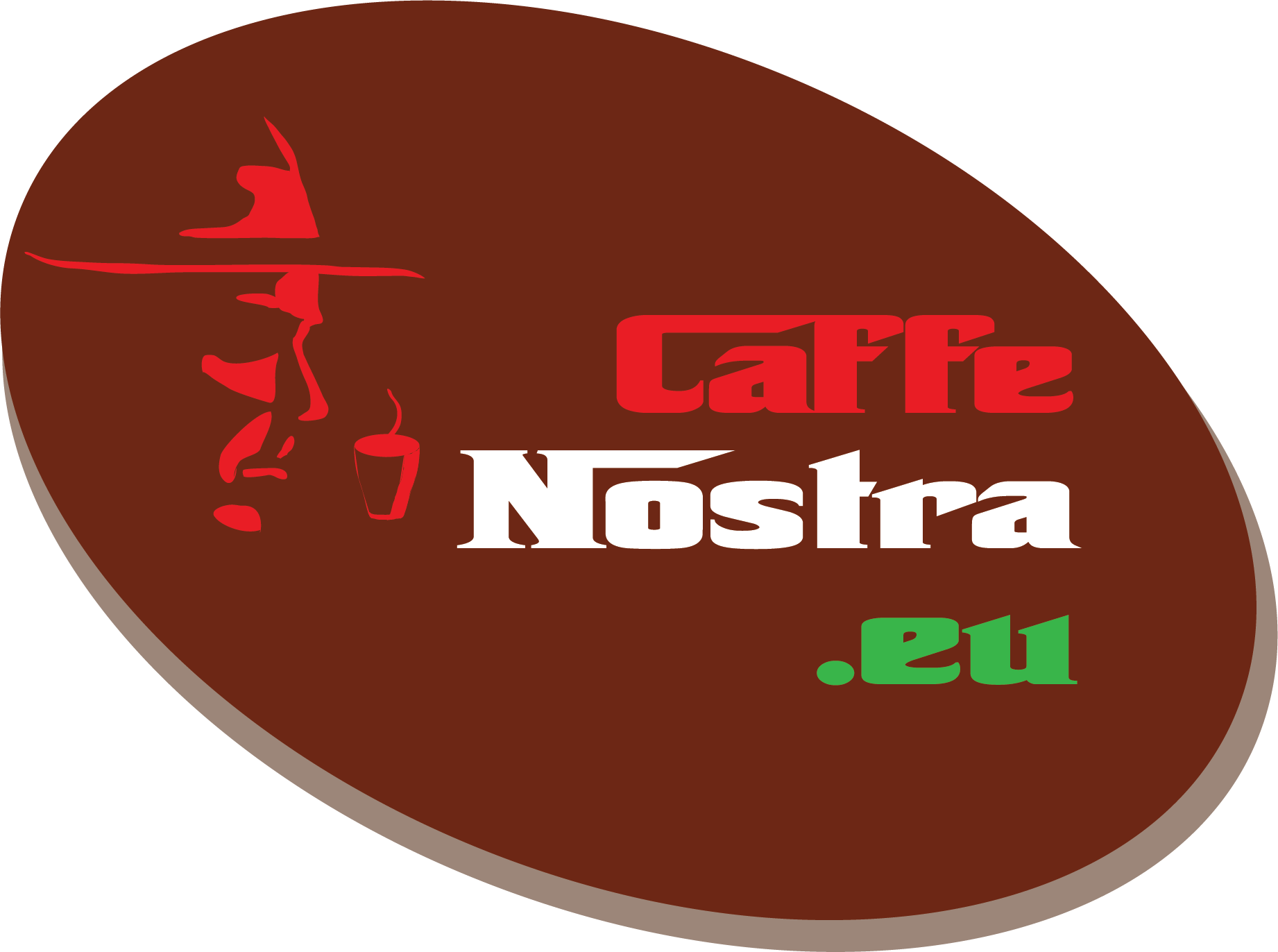ITALIAN ESPRESSO NATIONAL INSTITUTE
Althougt Italians are not coffee producers, Espresso is now
one of the most successful symbols of “made in Italy”
worldwide. Espresso is also among the products that are
copied the most, often with very poor results. It is not rare for
the word espresso, coupled as it may be with other words or
symbols evoking the spirit of Italy, to conceal simple blends of
poor quality coffee or even products that have nothing to do
with the little cup that cheers people up by giving them long
lasting and superfine pleasure. Therefore, on 6 July 1998
the Istituto Nazionale Espresso Italiano (Inei) was founded,
with the specific aim of safeguarding and promoting
Espresso. – after three years of extensive research,
conducted by the Istituto Internazionale Assaggiatori
Caffè (International Coffee Taster Institute) and by the
Centro Studi e Formazione Assaggiatori (Research and
Training Centre for Tasters) with the collaboration of the
lectures from the Universities of Udine and Turin, and
aiming at defining the quality expectations of those
who order a cup of espresso. In a little more than one
year, Inei obtained certification for espresso coffee with
the mark Espresso Italiano (certificate of product
conformity Csqa n. 214 – 24 September 1999, DTP 008
Ed.1). To guarantee consumers who choose to drink
espresso at coffee bars bearing its mark, a strict
technical specification was issued, requiring:
• the use of a certified coffee blend;
• the use of certified equipment (machine and
grinder-dispenser);
• the use of licensed personnel.
Compliance with the three conditions above,
under the supervision of the experts from the
Italian Espresso National Institute and of the
auditors of the Certifying Body, is it possible
to affer the consumer a coffee identified by the
Espresso Italiano mark.
What is espresso?
It is the best way to obtain from knowledgeably
roasted coffee beans all the pleasure that they are
able to give. More practically, espresso is the
drink-in-a-cup obtained by forcing adequately
pressurised water through coffee powder.
Espresso coffee should not contain any additive or
flavouring and should be free of any artificially added
water.
What are the sensory characteristics
of the certified Espresso Italiano?
The sensory characteristics of Espresso Italiano are
those set forth by the technical specifications for the
sensory quality of the Espresso Italiano marked coffee.
More precisely, Espresso Italiano in the cup and ready
for consumption, must have the following profile:

How was it possible to define sensory characteristics?
The decision on the quality of any product is
silently pronounced by the consumer. To
understand what customers expect when they
order an espresso, the Istituto Internazionale
Assaggiatori Caffè, with the technical
assistance of the Centro Studi e
Formazione Assaggiatori, carried out
thousands of consumer tests and
laboratory tests to define what
objective and measurable
characteristics belong to the preferred types of espresso.
These characteristics were then codified, along with the
method to determine them.
How to determine whether the sensory characteristics conform to the certified profile?
Through a panel of expert tasters that carry out
sensory analysis individually on the proper card
called Trialcard Espresso Italiano. Data obtained
from tasting is processed through special
statistical tools that verify the reliability of the
outcomes and judges.
Why certify the sensory quality of Espresso Italiano?
Today, Espresso is one of the most successful
expression of “made in Italy” in the food
and drink sector, but this is exactly the
reason why so often its name is misused to
identify products that are not up to tradition
and do not meet consumers’ expectations.
Certification of the sensory quality has enabled
the producers of blends and equipment to
establish a new contract with the end user and a
commitment to comply with certain requirements under the
control of a watchdog: the Certyfing Body.
What are the contributing factors to obtain Espresso Italiano?
Espresso Italiano must be obtained from a
certified blend, using certified equipment
(machine and grinder-dispenser) and a
licensed facility manager. If even just one of
these elements is missing, espresso
cannot be said to comply with the
requirements set forth by the
specification.
How can consumers find Espresso Italiano?

The bars and restaurants that exclusively
use certified blends, certified
equipment and licensed personnel can
affix the Espresso Italiano Certificato
mark to inform consumers that they can –
and must – request an espresso with sensory
characteristics that comply with those provided by
the specification.
How
How can bars and restaurants obtain the Espresso Italiano mark?
The bars and restaurants that wish to
obtain the Espresso Italiano mark can
submit their application to the Istituto
Nazionale Espresso Italiano, which will
start a procedure to verify that all the
conditions required by the technical
specification for certification are in place.
How can an operator obtain the license
to prepare Espresso Italiano?
By attending the courses organised by the Istituto
Internazionale Assaggiatori Caffè both in Italy and abroad,
and by passing the final exam.
What characteristics – in technical detail –
are required to obtain Espresso Italiano?
The product certification aims at considering the most
important aspect: the satisfaction of the customers’
expectations of pleasure. However, the technical
specification includes test rules that can be used to answer
this question. The following are some important
conditions to obtain Espresso Italiano – though these
alone would not be adequate to fulfil the quality
requirements:
• Necessary portion of ground coffee 7 g ± 0,5
• Exit temperature of water from the unit 88°C ± 2°C
• Temperature of the drink in the cup 67°C ± 3°C
• Entry water pressure 9 bar ± 1
• Percolation time 25 seconds ± 2,5 seconds
• Viscosity at 45°C > 1,5 mPa s
• Total fat > 2 mg/ml
• Caffeine < 100 mg/cup
• Millilitres in the cup (including foam) 25 ml ± 2,5
From a descriptive profile standpoint,
what are the sensory characteristics of
an Espresso Italiano?
On sight, Espresso Italiano has a hazel-brown to
dark – brown foam – characterised by tawny reflexes
– with a very fine texture (absence of large
mesh and larger or smaller
bubbles). The nose reveals an
intense scent with notes of
flowers, fruits, toasted bread
and chocolate. All of these
sensations are felt also after
swallowing the coffee in the
long lasting aroma that
remains for several
seconds, sometimes
even for minutes. Its taste
in round, substantial and
velvet-like. Sour and bitter
tastes are well balanced and
neither one prevails over the other. There is
no, or a barely perceptible, astringent taste.
Can Espresso Italiano be obtained from
only one type of coffee?
Espresso Italiano is obtained, by definition
and by tradition, through an expert blend
of coffees of different origin. This is the
only way to obtain the pleasant and rich
aroma and the important and velvet
body. The difference between an
Espresso Italiano and a preparation
obtained with the same methods but
from one single coffee is similar to the
dif ference to be found, in music,
between a symphony and a solo
performance: the more pleasant one
cannot be established in advance, but
they are certainly different.
Should the type of coffee used in the preparation of espresso be better in
quality than the types used for other preparations?
Coffee is a fine pleasure and as such
it should always be prepared from
good raw materials, but if espresso
is prepared according to the
guidelines, it produces a
remarkably higher extraction of
both good and bad coffee
components. This is why the
quality of the coffee used for
espresso should be totally faultless.
What is the milestone for the quality of
espresso?
A person, with his/her knowledge, capabilities and
motivation. It is indeed the operator who selects and
manages the equipment and the blend, adjusts the
equipment to the properties of the blend, and controls every
step of the preparation process to make excellent espresso.
This is why the Italian Espresso National Institute has been
attaching so much importance to the operator.
How can the persons who prepares Espresso
Italiano realise that the product is not in
compliance with the conformity profile?
First of all from tasting: a well trained operator can give a
comprehensive judgement on the little cup’s content simply
by using his/her sense organs.
However, if he does not wish to taste too many espressos
in one day, he has also indirect control tools
available: a good espresso, for example, is produced
from the machine at a rate of one millilitre per second.
It takes 25 seconds to fill a 25 millilitre cup (the
correct dose).
What happens if an espresso is obtained in 15 or in 35 second?
The blend design generally ensures
that, after duly grinding the blend, it
yields 25 millilitres of coffee, by
taking the best part of the substances
present in a coffee bean (glucides,
proteins, fat and aromatic
components) and by leaving the less
noble substances in the exhaust cake.
If the extraction time lasts no longer than 15 seconds, it
means that the hot water has not taken the right
treasure with it and a part of precious substances has
remained in the powered. In addition, the beverage is
going to be unbalanced from a sensory standpoint. The
espresso will be poor in body, more bitter than expected
with a faint aroma. If it lasts 35 seconds the opposite is
going to occur: the woody, unpleasant and pungent
components will be extracted from the coffee powder.
Obviously one might say that it takes less time to make 15
millilitres of coffee and it takes longer to make 35, as is done
in certain countries: in both cases the preparation obtained will
not present the requirements of Espresso Italiano.
What is the ideal cup for Espresso Italiano?
The ideal container is a white china cup, free of any inside decoration, elliptical in
shape, truncated inside while it may or may not be bell-shaped outside, with 50
millilitre approximate capacity. This is the only cup whereby it is possilble to fully
appreciate the look of the excellent foam, the precious smell and the warm and
smooth taste of espresso.
How can one learn to taste Espresso Italiano?
To learn the espresso tasting method you can attend one of the many one-day license courses organised
by Istituto Internazionale Assaggiatori Caffè (c/o Centro Studi Via delle Tofane, 14 – 25128 Brescia)
every year both in Italy and abroad.
What are Iiac’s permanent training points?
The permanent training points (punti di formazione
permanente or Pfp) are set up by Istituto
Internazionale Assaggiatori Caffè on the premises of
coffee roasters, machine manufactures, hospitality
operators (bars, hotels and restaurants) and all levels
of schools to spread the culture and art both among
operators in the coffee business and among careful
consumers.
NATIONAL INSTITUTE OF COFFEE TASTERS
The Istituto Internazionale Assaggiatori
Caffè (Iiac), is a non-profit association
that is financed through the
associates’ shares only. It was founded in
1993 with the goal of developing and
deploying a scientific method to give
shape to the sensory value of coffee. Iiac
immediately focused its attention
immediately on espresso, as a sure
symbol of “made in Italy”, and has
developed one tasting method and
one sensory analysis method. The former is described in
detail in the book Coffee Tasting – published in Italian
and English, translated into Spanish and even
published in Japanese. This tasting method is
recognised by the International Coffee Organization
and by important coffee producing countries like
Columbia, where, in 1998, no fewer than five hundred
people have attended the seminars on espresso
tasting. Both tasting and sensory analysis are
considered in depth in the book Espresso Italiano
Tasting. Moreover, since its foundation, the Istituto
Internazionale Assaggiatori Caffè has held several
training courses to release licenses, attended even by
Japanese, Spanish, Americans, Australians and
Germans. In 1999 Iiac defined the Espresso Italiano
Specialist training course to license the operators of
those bars offering Espresso Italiano Certificato. The
Institute has an important scientific committee that
plans research to guarantee innovation in the sector. Its
members are University staff, well-known experts and
professional. In line with this activity, the Institute
provides assistance to University students who show an
interest in coffee to draw up their graduation theses,
organizes congresses, carries out thousands of consumer
tests to identify quality models and sets up sensory analysis
session on espresso.
Istituto Internazionale Assaggiatori Caffè
c/o Centro Studi – Via delle Tofane 14 – 25128 Brescia (Italy)
Tel. +39 030 397308 – Fax +39 030 300328
e-mail: presidenza@assaggiatori.com
I s t i t u t o N a z i o n a l e E s p r e s s o I t a l i a n o
c/o Centro Studi Via delle Tofane 14 – 25128 Brescia (Italy)
Tel. +39 030 397308 – Fax +39 030 300328
e-mail: presidenza@assaggiatori.com
